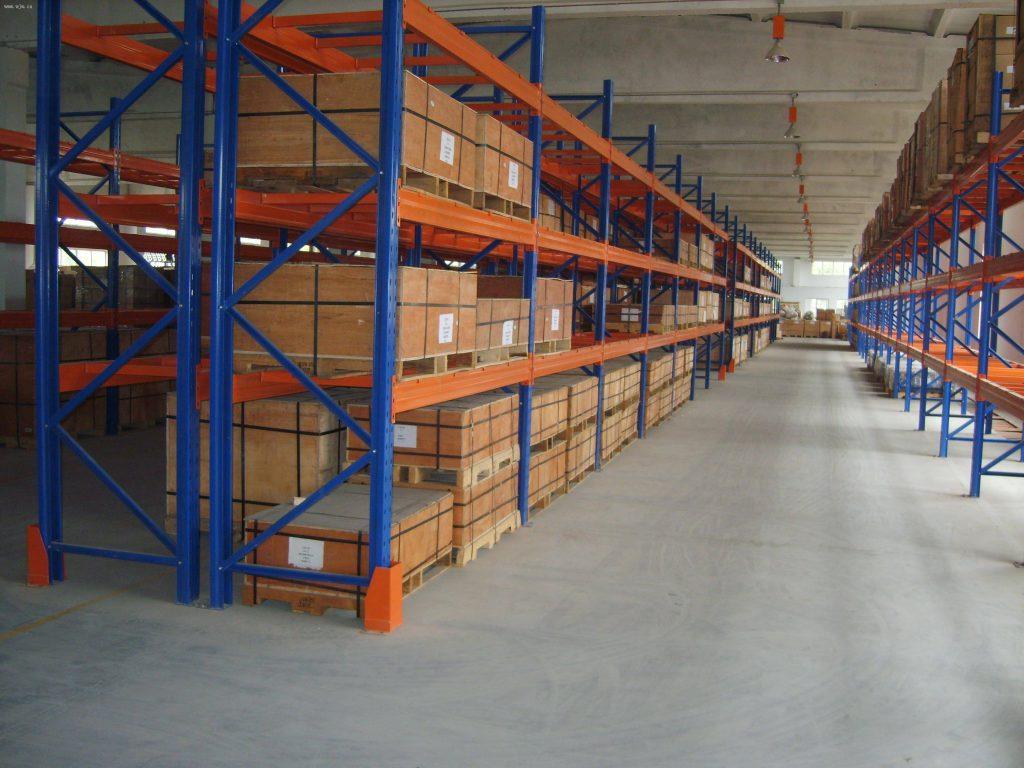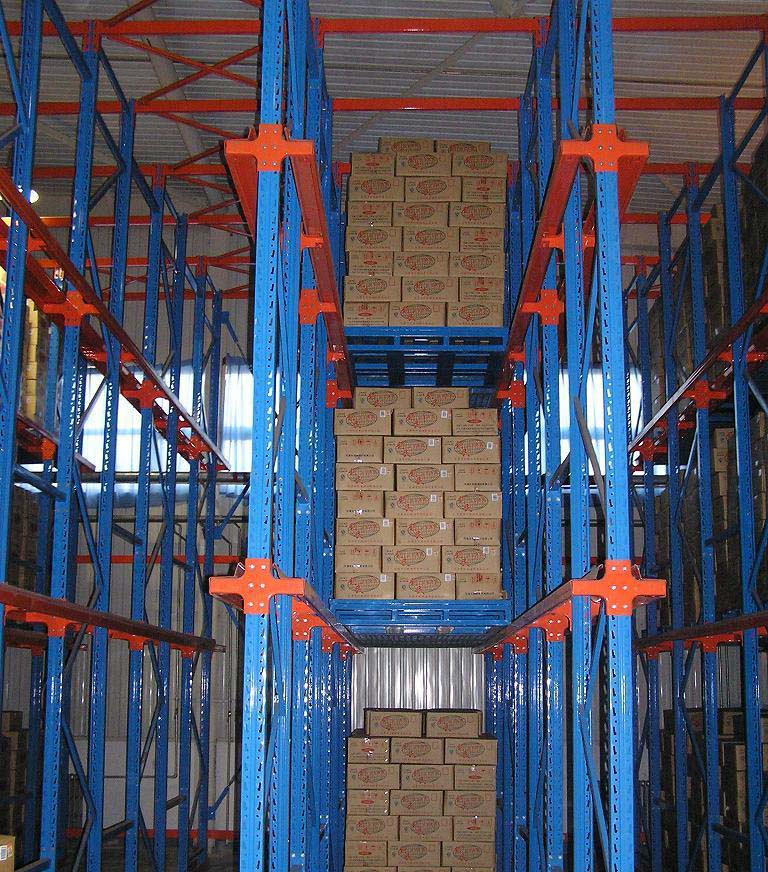In the relentless pursuit of warehouse optimization, maximizing space, accessibility, and operational efficiency is paramount. Among the diverse array of storage solutions available, selective racking stands out as the undisputed champion for countless operations worldwide. But what makes this seemingly simple system so universally popular and effective? This article dives deep into the selective racking universe, exploring at least seven key aspects that solidify its position as a foundational warehouse storage solution, directly impacting your bottom line.

Understanding the Core: What is Selective Racking?
At its heart, selective racking is the most common type of pallet racking system. Its defining characteristic is direct access to every single pallet position. Unlike drive-in, push-back, or pallet flow systems where pallets are stored in lanes multiple deep, selective racking stores pallets in single rows on each side of an aisle. Forklifts can drive directly up to any pallet location without needing to move others. This fundamental design principle of immediate accessibility underpins all its advantages.
1. Unparalleled Accessibility and Pick Efficiency
The most significant benefit of selective racking is the direct access it provides to every SKU (Stock Keeping Unit).
Instantaneous Picking: Operators can retrieve or store any pallet without moving others. This is crucial for operations requiring high order accuracy, First-In-First-Out (FIFO) or First-Expired-First-Out (FEFO) inventory management, or handling a vast number of SKUs. There's no need to shuffle pallets within a lane.
Reduced Handling Time: Direct access drastically minimizes travel and handling time per pallet compared to deep-lane systems. Forklift operators spend less time maneuvering within racks and more time moving product.
Enhanced Productivity: Faster access translates directly into higher picks per hour (PPH) and overall throughput. This efficiency is vital for distribution centers facing tight shipping windows or high-volume e-commerce fulfillment demands. Selective racking empowers your workforce to be more productive.
2. Optimized Space Utilization (Within its Design Scope)
While not the densest storage solution available, selective racking offers excellent space utilization for operations requiring high selectivity.
Vertical Storage: Leveraging warehouse height is key. Selective racking systems can be built very tall (often 30+ feet or more, subject to building constraints and forklift capabilities), stacking pallets vertically and maximizing cubic space.
Flexible Bay Configuration: The width and depth of bays can be customized to match specific pallet sizes, minimizing wasted space within each bay. Beam levels are also easily adjustable to accommodate different pallet heights, optimizing vertical space between levels.
Balancing Density & Access: Selective racking strikes the ideal balance for many businesses. It provides significantly better density than floor stacking while maintaining full accessibility, unlike ultra-dense systems which sacrifice accessibility for space. Achieving densities of 80-85% of theoretical maximum floor storage is common with well-configured selective pallet racking.
3. Maximum Flexibility and Adaptability
Warehouse needs evolve. SKU profiles change, inventory volumes fluctuate, and operational requirements shift. Selective racking excels in adaptability.
Easy Reconfiguration: Beam heights can be quickly and easily adjusted without dismantling the structure. This allows warehouses to accommodate seasonal changes, new product lines with different dimensions, or shifts in inventory profiles. Adding or removing sections is also relatively straightforward.
SKU Diversity Handling: It effortlessly handles a wide variety of SKUs. Unlike systems designed for homogeneous product storage, selective racking can store different products in every pallet position without impacting the accessibility of others. This is ideal for warehouses with diverse inventories.
Compatibility: Selective racking integrates well with other systems. It can be used in specific zones within a warehouse alongside other storage solutions like carton flow, mezzanines, or even denser pallet systems in areas where they make sense. It also readily accommodates warehouse management system (WMS) location labeling.

4. Improved Inventory Management & Control
The direct access nature of selective racking inherently supports superior inventory management practices.
Accurate Cycle Counts: Auditing inventory is significantly easier and faster. Every pallet is visible and accessible, minimizing errors and reducing the time required for physical counts.
Clear Visibility: Inventory is highly visible to operators and managers. Identifying specific lots, expiration dates, or damaged goods is straightforward, enhancing quality control and traceability.
Simplified WMS Integration: Each pallet position is a unique, easily identifiable location. This simplifies integration with Warehouse Management Systems (WMS), enabling precise tracking of stock levels, movement history, and location accuracy. Selective racking provides the physical structure that complements digital inventory control perfectly.
5. Cost-Effectiveness and Return on Investment (ROI)
Selective racking often presents a highly attractive financial proposition.
Lower Initial Investment: Compared to more complex automated storage and retrieval systems (AS/RS) or even some denser semi-automated racking (like sophisticated push-back systems), the upfront cost for selective racking is typically lower. The components (uprights, beams, wire decking if used) are standardized and widely available.
Reduced Operating Costs: The simplicity of operation with standard forklifts (counterbalance, reach trucks) keeps material handling equipment costs manageable. Maintenance costs for the racking itself are also generally low.
Faster Installation: Selective racking systems are relatively quick and straightforward to install compared to complex automated systems, minimizing warehouse downtime during implementation.
Proven Durability: High-quality selective racking, when properly installed and maintained, offers an exceptionally long service life, delivering value for decades. This longevity contributes significantly to a strong ROI.
6. Implementation Considerations & Best Practices
While highly versatile, successful selective racking deployment requires careful planning:
Aisle Width Optimization: This is critical. Aisle width is determined by the type of forklift used (reach trucks require narrower aisles than counterbalance trucks) and its turning radius. Choosing the right MHE (Material Handling Equipment) directly impacts how much floor space is consumed by aisles versus storage. Narrow-aisle (NA) selective racking using reach trucks significantly increases storage density.
Load Calculations & Engineering: The system must be engineered to handle the specific pallet weights and dimensions, including the weight of the forklift during loading/unloading. Seismic requirements in certain regions are also a crucial factor. Never compromise on structural integrity.
Safety Features: Incorporate essential safety elements: column protectors (upright guards) to prevent damage from forklifts, pallet supports or wire mesh decking to prevent pallets from falling, and proper end-of-aisle protection. Regular rack inspections are non-negotiable.
Beam Level Configuration: Optimize vertical space by setting beam levels as close as safely possible to the top of the pallet load below. Avoid excessive vertical gaps that waste space.
7. Ideal Applications for Selective Racking Systems
Selective racking shines in numerous scenarios:
Warehouses with High SKU Counts: Where accessing any individual SKU quickly is essential (e.g., distribution centers, retail suppliers).
Operations Requiring FIFO/FEFO: Perishable goods, pharmaceuticals, or items with strict lot control mandates.
Fast-Moving Consumer Goods (FMCG): Environments with high turnover and frequent order picking.
Cold Storage Facilities: The simplicity and accessibility are advantageous in challenging, low-temperature environments.
Warehouses Handling Diverse Product Sizes: Where pallet dimensions and weights vary significantly.
Facilities Needing Operational Flexibility: Businesses anticipating growth or changes in inventory profiles.
Cost-Conscious Operations Seeking Efficient Storage: Providing an excellent balance of density, access, and affordability.
Selective racking remains the bedrock of efficient warehouse storage for compelling reasons. Its core principle – direct access to every pallet – delivers unmatched operational advantages in accessibility, picking speed, and inventory control. Combined with its inherent flexibility, cost-effectiveness, and ability to optimize vertical space, it provides a robust and adaptable solution for a vast array of warehouse environments. While denser options exist for specific high-volume, homogeneous goods, selective racking offers the best overall balance for operations valuing selectivity, flexibility, and efficiency across a diverse product range. By understanding its benefits, carefully planning implementation, and adhering to safety best practices, businesses can leverage selective racking systems to significantly enhance warehouse productivity, accuracy, and ultimately, profitability. Its enduring popularity is a testament to its fundamental effectiveness in the dynamic world of logistics.







